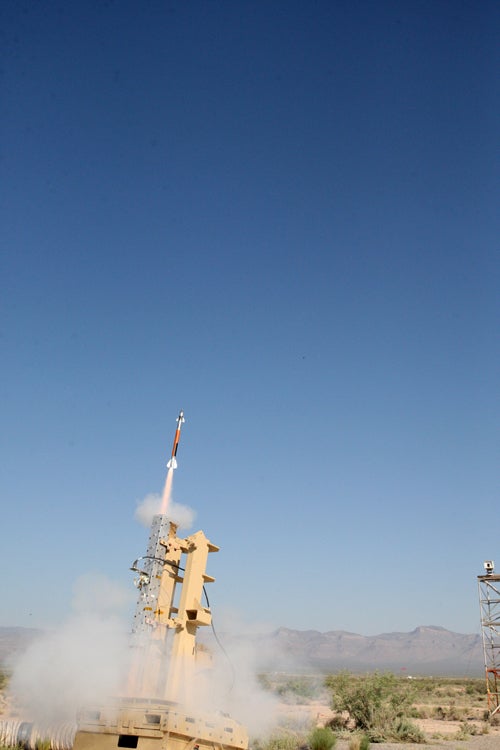 Lockheed Martin has successfully completed the controlled test vehicle flight test of the miniature hit-to-kill (MHTK) interceptor of its extended area protection and survivability integrated demonstration (EAPS ID) programme at White Sands Missile Range in New Mexico, US.
Lockheed Martin has successfully completed the controlled test vehicle flight test of the miniature hit-to-kill (MHTK) interceptor of its extended area protection and survivability integrated demonstration (EAPS ID) programme at White Sands Missile Range in New Mexico, US.
During the testing, conducted in coordination with the US Army Research Development & Engineering Command/Aviation Missile Research Development & Engineering Center (RDECOM/AMRDEC), the tactically configured and vertically launched MHTK interceptor underwent a series of manoeuvres to demonstrate the performance required while capturing data.
The MHTK missiles interceptor is designed to counter rocket, artillery and mortar (RAM) targets at extended ranges.
Lockheed Martin’s Missiles and Fire Control business air and missile defence programme vice president Mike Trotsky said that the successful flight test further demonstrated the capabilities of the company’s MHTK missile.
"EAPS extends our legacy of accuracy and lethality first demonstrated in our combat-proven PAC-3 missile," Trotsky said.
See Also:
AMRDEC EAPS programme director Loretta Painter said that the test highlighted progress in demonstrating the technologies that will be required for employing the MHTK concept to defeat the RAM threats.
How well do you really know your competitors?
Access the most comprehensive Company Profiles on the market, powered by GlobalData. Save hours of research. Gain competitive edge.

Thank you!
Your download email will arrive shortly
Not ready to buy yet? Download a free sample
We are confident about the unique quality of our Company Profiles. However, we want you to make the most beneficial decision for your business, so we offer a free sample that you can download by submitting the below form
By GlobalData"This flight test provided the programme with critical data, which is now being analysed and the resultant will be incorporated into the system as this effort moves into guided flight tests, intercepting RAM targets," Painter added.
"Providing improved protection to our deployed soldiers and other personnel is extremely important; the AMRDEC is very pleased with this test."
According to the company, the collected data will be used to support guided flight tests against live RAM targets, starting in the second half of 2012.
The EAPS is a 1m-long agile, miniature hit-to-kill interceptor system designed to meet AMRDEC’s average unit production cost goal at specified quantities.
Weighing around 3kg, the system provides soldiers with greater protection and increased flexibility over legacy and temporary systems, by supporting multiple launchers and fire control sensors, as well as defeating targets through body-to-body impact at tactical ranges.
Image: Lockheed’s extended area protection and survivability system during controlled test vehicle flight test. Photo: courtesy of Lockheed Martin.



